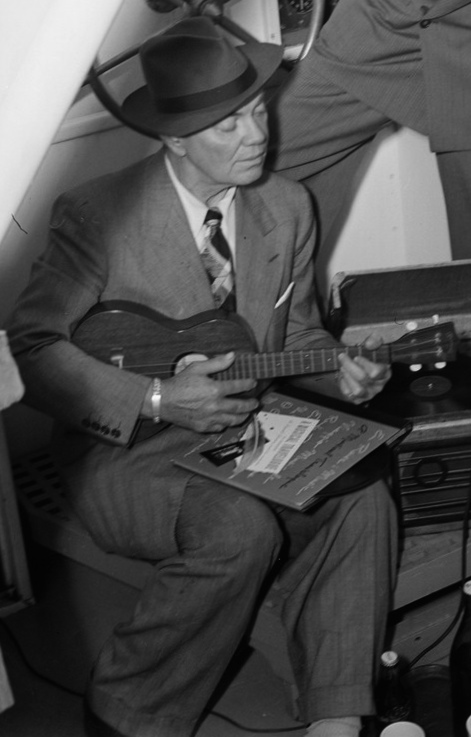Mark Twain Wasn’t the Only Famous Person from Hannibal, MO, Pt. 1: Ukele Ike
At first glance, Hannibal, Missouri, is all Mark Twain, all the time. Even the the African-American history museum,* uses Twain’s Huckleberry Finn as a jumping off point. However, there is a small museum devoted to Hannibal history as a while. Like many local history museums, the hours are erratic and there is a homemade feel to the exhibits—particularly in contrast to the Mark Twain interpretive center. Like most local history museums, it tells the story of the town’s founders and the industries that kept it alive in its boom years—which is always interesting as far as I’m concerned. But the exhibits that captured my imagination were the ones dealing with Hannibal’s “other” celebrities. One I knew. Two were totally new to me.
***
First up, Cliff Edwards, known professionally as “Ukulele Ike.”* Who, you say? Stick with me. I guarantee that you know his most famous work even if you don’t know his name.
Cliff Edwards was born in Hannibal in 1895, and like Mark Twain he left early and traveled far. (Let’s face it, you didn’t become famous if you stayed in Hannibal.)
Edwards began his musical career in St. Louis, where he provided the soundtrack to silent movies. Because performing “illustrated songs” didn’t pay enough to live on, he also worked a lot of odd jobs, washing dishes, painting railroad cars, selling newspapers, and singing in bars. At some point, probably around 1916, Edwards discovered the ukulele, which had reached the United States mainland the year before thanks to the Hawaiian musicians and dancers who performed in the Panama-Pacific International exposition in San Francisco.
Over time, Edwards found his way into touring tent shows and traveled wherever the music took him. He became “Ukulele Ike” in 1917 at a gig at the Arsonia Cafe in Chicago, where one of the waiters, who couldn’t remember his name, called him Ike.
The Arsonia was the real start of his music career. From there he began to tour the vaudeville circuit—a serious step up from the tent shows. He made his first recordings for Columbia Records in 1919. In 1924, George Gershwin hired him to play in the Broadway show Lady Be Good alongside the young Fred and Adele Astaire. The show was a hit, and so was “Ukulele Ike”.
After performing in several other Broadway shows, including the Ziegfield Follies of 1927, Edwards moved to Hollywood where he introduced the hit song “Singing in the Rain”–20 years before Gene Kelly made it famous a second time. He worked on movies with Buster Keaton and sang in the kind of 1929 musicals that had big production numbers and no real story line.
In 1939 he played what would be his best-known role: Jiminy Cricket in Walt Disney’s Pinocchio. The role included singing “When You Wish Upon a Star” which won an Oscar for best song in 1940 and became the studio’s theme song in the 1950s. During the days of The Mickey Mouse Club, Disney received 2000 letters a week from fans asking for the name of the singer.
Warning: clicking the video may induce an earworm.
* Jim’s Journey: The Huck Finn Freedom Center.
*He got the name when he was working in a cafe on the west side of Chicago. One of the waiters, who couldn’t remember his name, called him Ike.

You are rapidly becoming my favorite writer! Best wishes~!
Ah, shucks!